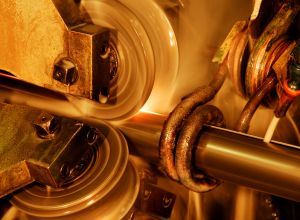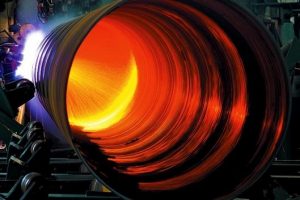Types of Welded Pipes:
1. Longitudinally Welded Pipe / ERW Pipe
Resistance Welded Pipe.
What is ERW? Electric Resistance Welding is a process in which the metal parts in contact are heated with an electric current, causing the metal to melt and permanently join. During pipe production, the two ends of flat steel are formed into a circular shape by rollers in the pipe mill. At the exact point where the edges meet, an electric current is applied to heat and fuse them together, creating a welded seam.

Borusan Mannesmann produces steel pipes using the ERW method for a variety of purposes, including water pipes, natural gas pipes, fire protection pipes, industrial pipes, construction pipes, automotive pipes, and main pipelines.
Longitudinally welded pipes are produced in diameters ranging from 5 mm to 350 mm.
2. Spiral Welded Pipe / SAW Pipe (HSAW or SSAW Steel Pipe)
For large-diameter pipelines used in projects like oil pipelines, water pipelines, and natural gas pipelines, the spiral welded pipe production method is used. In this method, the weld spirals around the pipe, which is why these are called Spiral Welded Steel Pipes.
The welding method used is Submerged Arc Welding (SAW). Since SAW only indicates the welding method and not the visual appearance of the weld, the more precise terms for spiral welded steel pipes are SSAW (Spiral Submerged Arc Welding Pipe) or HSAW (Helical Submerged Arc Welding Pipe).
What is Submerged Arc Welding (SAW)? In this method, a welding electrode is used along with an electric current to join the metal. Unlike the ERW process, which relies solely on electric current, SAW requires the electrode because rollers are not used in the same way during production.
Spiral welded pipes are produced in diameters ranging from 400 mm to 3000 mm, with wall thicknesses up to 25 mm, depending on the diameter.
